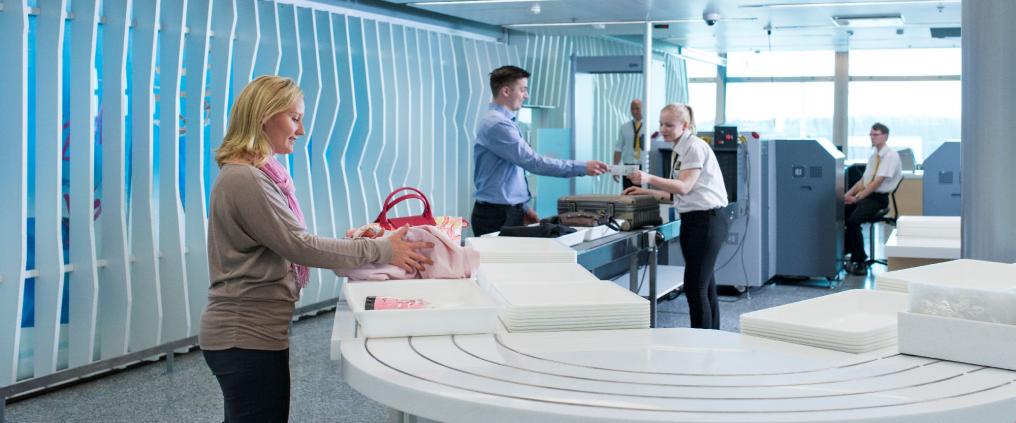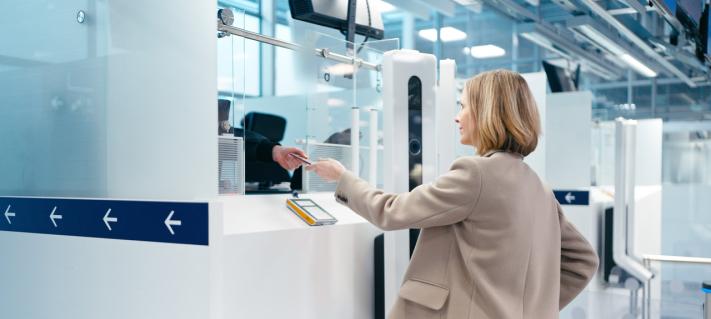Many passengers have wondered which everyday items can be packed in hand luggage, and both Finavia and airlines often receive questions on the subject. Although in practice everyone is aware of the ban on dangerous objects such as blades and explosives, there are many ordinary objects that create confusion.
Finavia's Service Manager Joni Pekkanen helped us gather together some items that can often cause confusion.
1. Nail clippers, sewing and knitting needles – permitted
For safety reasons, objects that are used to cut or pierce surfaces, such as scissors, blades and most multipurpose tools, are prohibited in the passenger compartment. Small pairs of scissors, such as nail scissors, with a blade length of less than 6 cm from the hinge point, are permitted. Sewing needles and knitting needles are also allowed – but it should be noted that some airlines can follow more stringent safety practices, which is good to remember when flying to the United States.
2. Credit card knives – forbidden
Pekkanen reminds that among other items, credit card knives can cause confusion. Even though the cutting edge is short, they are completely forbidden as, at security, they are considered as hidden objects.
3. Musical instruments – permitted, with some size restrictions
Many have wondered if their musical instruments can also be brought on the plane because the cargo hold is not the best place for such an expensive and sensitive item. According to Pekkanen, travellers must bear this in mind: only size sets the limitations.
“From a security checkpoint, instruments are always allowed luggage. However, it is up to the airline to determine the size of the instrument to be stored to the cabin. It is advisable for those who carry valuable instruments to always contact the airline when booking.”
4. Liquids – forbidden in over 100 ml packages
The most removed items in the security check are various types of liquids. You can check our separate story on how to pack liquids and what exceptions are allowed in hand luggage.
5. Power banks – forbidden in checked baggage, permitted in carry-on luggage
Most security limitations are set for hand luggage. However, there are limitations in checked baggage as well: flammable goods and substances are completely prohibited in the cargo hold. This includes most lithium batteries.
“Separate batteries are prohibited in the hold. This applies to camera batteries as well as normal battery backup power sources. In addition, electronic cigarettes must not be packed in checked baggage due to its power supply. However, a phone’s AC power chargers may be packed in the suitcase as usual as there is no battery,” Pekkanen explains.
6. Phone charger – permitted
Phone chargers don’t contain a lithium battery. They can hence be packed in either carry-on or checked baggage.
7. Electric bicycle and balance board – forbidden
Pekkanen also reminds passengers that battery-powered balance boards must not be carried on an airplane, as their battery safety cannot be verified. Also, an electric bicycle cannot be included on the trip if its battery is not clearly removable or has a battery capacity of more than 160 watts.
“In general, it is good to note that many electric vehicles are completely forbidden for safety reasons.”
What happens to a forbidden item found at security check?
Forbidden items are carried in one’s hand luggage due to a lack of information but also by accident.
“The same bag has often traveled from an ice fishing trip to a beach holiday. If we find a valuable multi-tool, such as a Leatherman, in the security check, for instance, we will see if it’s possible to move it to the cargo hold or mail the item so that it does not need to be confiscated permanently,” says Pekkanen.



